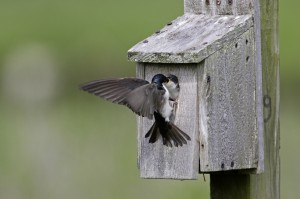28
Sep
Proposed Rulemaking in Maine Undermines Comprehensive School Pesticide Reform
(Beyond Pesticides, September 28, 2012) Over the last few months, heated debate over toxic pesticide use in school buildings and grounds have dominated discussion in Maine. Unfortunately, proposed amendments to Maine’s school pesticide regulations make no mention of safer, preventive pest management practices, or the use of least-toxic pesticides only as a last resort, setting back efforts to reform pesticide legislation for schools in Maine. Should these new amendments be approved, students in Maine will not receive the same protections as students in other states that have been eliminating unnecessary pesticide use by adopting pest prevention practices and using least-toxic pesticides as the last resort. Tell the Maine Board of Pesticide Control to keep pesticides out of Maine Schools by today, September 28, 2012. 
Integrated pest management (IPM) is a program of prevention, monitoring, and control that eliminates or drastically reduces the use of pesticides. This is accomplished by utilizing a variety of methods and techniques, including cultural, biological, and structural strategies. It also stipulates the use of least-toxic chemical options only as the last resort. The amendments to Maine’s Chapter 27, which in 2007 established integrated pest management (IPM) procedures and standards for school buildings and on school grounds, do not make provisions for instituting preventive pest management practices nor the use of least-toxic options, which means the officials will still be able to spraying school property with potentially toxic pesticides, contrary to IPM. At the very least, provisions need to provide safe alternatives that will protect students, teachers, and community members alike.
The proposed rulemaking provides wide latitude for discretion on the part of the IPM coordinator and exterminator to determine whether pesticides should be applied to meet cosmetic threshold levels, (allowing pesticide management practitioners (PMPs) to decide whether dandelions are unsightly or spiders are undesirable), contrary to integrated pest management (IPM) practices. IPM should not support the application of pesticides for cosmetic purposes. The new amendments to Chapter 27 will exempt certain indoor pesticide use and mosquito spraying from advanced parental notification, and also exempt agricultural and horticultural educational centers from proper notification and the use of IPM techniques, further exposing students to potentially toxic pesticides.
The proposal allows pesticide management practitioners (PMPs) to decide whether dandelions are unsightly or spiders are undesirable. Most egregious of all, is the pointed lack of concern for personal safety and environmental fate that are intrinsic to herbicide and insecticide application. At the very least, provisions need to provide safe alternatives that will protect students, teachers, and community members alike.
Equally alarming is that the proposed rulemaking would exempt greenhouses, nursery plots and other agricultural educational centers from notification requirements prior to pesticide spraying. The proposal goes on the state ‚Äústudents entering treated areas must be trained as agricultural workers, as defined by the federal Worker Protection Standard.‚ÄĚ However, students are not agricultural workers and must not be considered as such. Children are especially vulnerable to chemicals due to physiological, metabolic, and behavioral characteristics that differ from adults. Training students as agricultural workers does not mitigate the unique circumstances that surround children‚Äôs exposures to pesticides.
Even without the proposed changes, persistent pesticide violations at schools highlight the need to strengthen existing policy. To name just one example, in June 2012 Tripp Middle School of southwestern Maine was fined $250 for a violation that sent five school employees to a medical facility. After school hours, a school employee applied Misty Wasp/Hornet Killer IIb to the school kitchen to control a fly problem. Exposure to Misty Wasp, active ingredient permethrin, may lead to headaches, dizziness, anesthetic effects, nausea, respiratory depression. Chronic exposure has other serious health impacts, including central nervous system damage. The following morning employees who intended to clean the application area reported seeing pools of pesticides, smelling chemical fumes and feeling ill. They were examined at a nearby medical facility.
Schools and day care centers must nurture a healthy environment in which children can grow and learn. Children are especially sensitive to pesticide exposure as they take in more pesticides relative to their body weight than adults and have developing organ systems that are more vulnerable and less able to detoxify toxic chemicals. Even at low levels, exposure to pesticides can cause serious adverse health effects. Numerous studies document that children exposed to pesticides suffer elevated rates of childhood leukemia, soft tissue sarcoma and brain cancer. Studies also link pesticides to childhood asthma, respiratory problems, and learning disabilities and inability to concentrate. For more information, see Beyond Pesticides’ Children and Schools page. To see more scientific research on the effects of pesticides on human health, see our Pesticide-Induced Diseases Database.
While the U.S. Environmental Protection Agency, the U.S. Department of Agriculture, Centers for Disease Control and Prevention, and the National PTA, among others, recommend schools adopt pesticide-reduction programs, without minimum federal standards, such as those contained in the proposed School Environment Protection Act, the protection provided children is uneven and inadequate across the country. SEPA provides basic levels of protection for children and school staff from the use of pesticides in public school buildings and on school grounds by requiring schools to implement a strictly defined IPM system and identify allowed least-toxic materials as a last resort for building management and organic practices for school grounds.
Aside from the serious concerns associated with pesticide use, it also should be noted that it has been repeatedly demonstrated that organic land management, when properly applied, can result in full, healthy, and weed-free turf. Organic land management is not simply a ‚Äúhands-off‚ÄĚ approach in which one is expected to sit back and do nothing to maintain the area. It requires careful fertility management, monitoring, and examination of weed and pest issues to diagnose problems, determine their source, and alter maintenance practices accordingly. Additionally, it has been shown that this approach can actually lower maintenance costs in the long term. Beyond Pesticides maintains numerous resources regarding research and guidance on organic lawn care.
Beyond Pesticides, founded in 1981, has worked extensively to promote sound IPM and organic policy in communities throughout the country. To this end, we support the implementation of strong Integrated Pest Management (IPM) policy in Maine and throughout the U.S., although the term IPM has been misused to characterize pesticide-dependent management systems. With proper design and preventive practices, there is little to no need to use any pesticide product. Existing buildings can be repaired and retrofitted and grounds can be planted with tolerant, native species, with nonsynthetic fertilization that supports healthy soils and virtually eliminates the use of pesticides. Join us in our fight against toxic pesticide use!
Take Action: Let the Maine Pesticide Control Board know that students are not ‚Äúmini adults‚ÄĚ and should be protected from pesticides on school grounds with strategies that eliminate pesticide dependency.
Send an email to the Maine Pesticide Control Board by TODAY – Friday, Sept. 28, if you are concerned about pesticides on school grounds.
All unattributed positions and opinions in this piece are those of Beyond Pesticides.



















